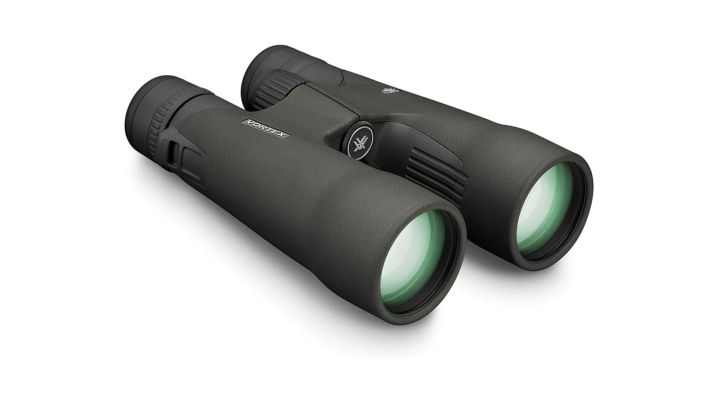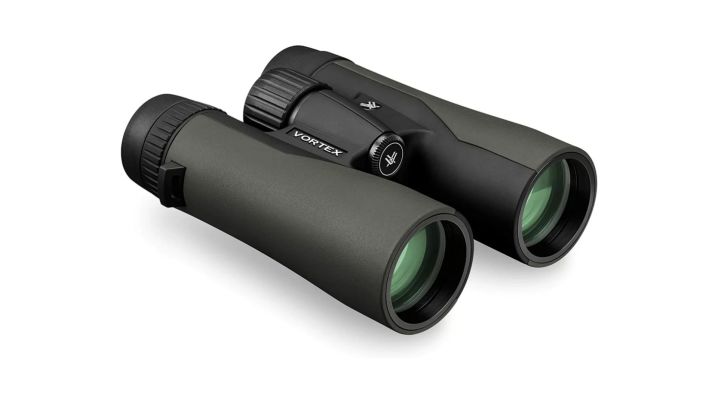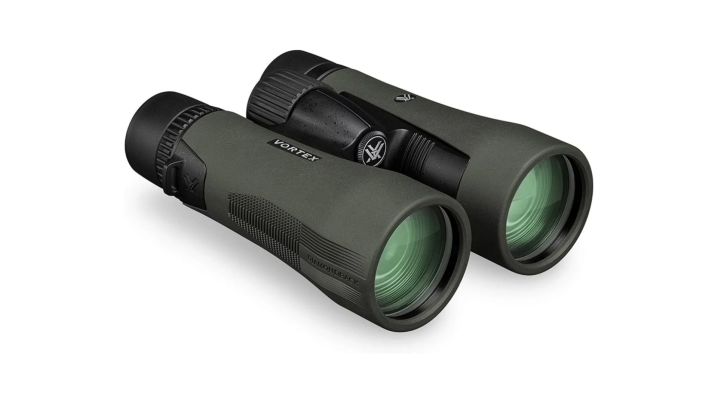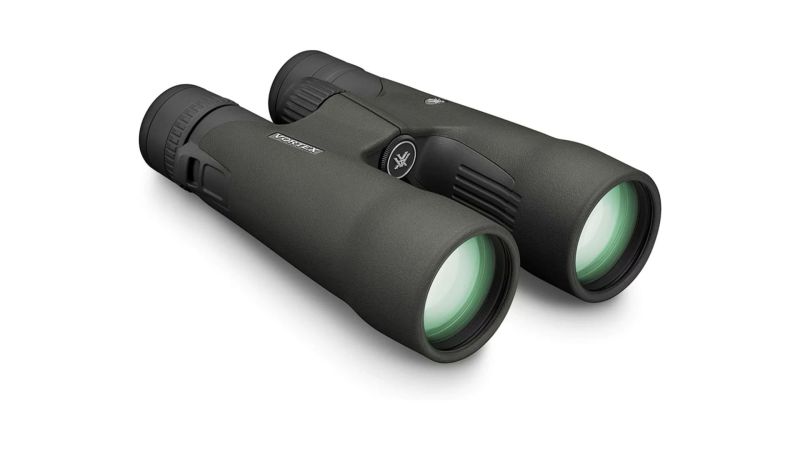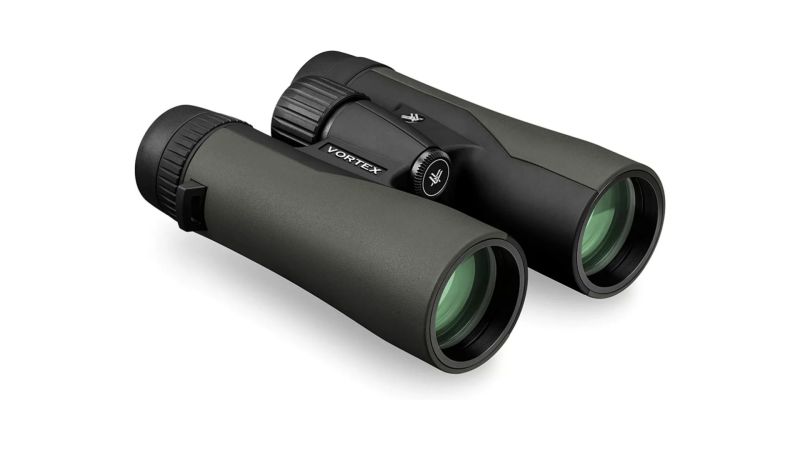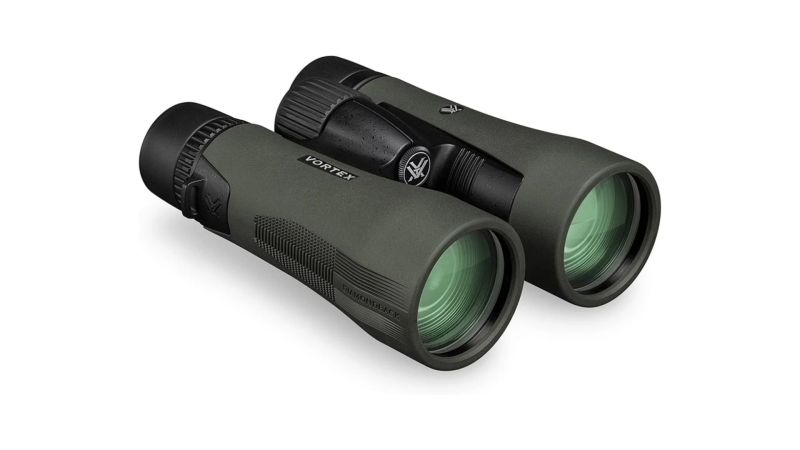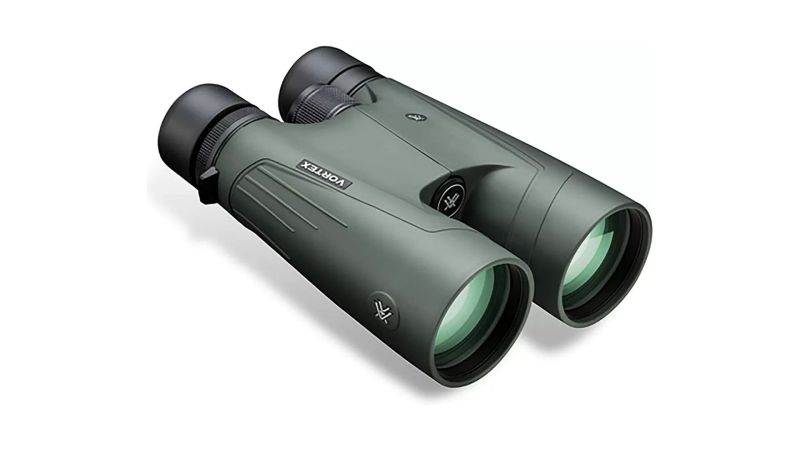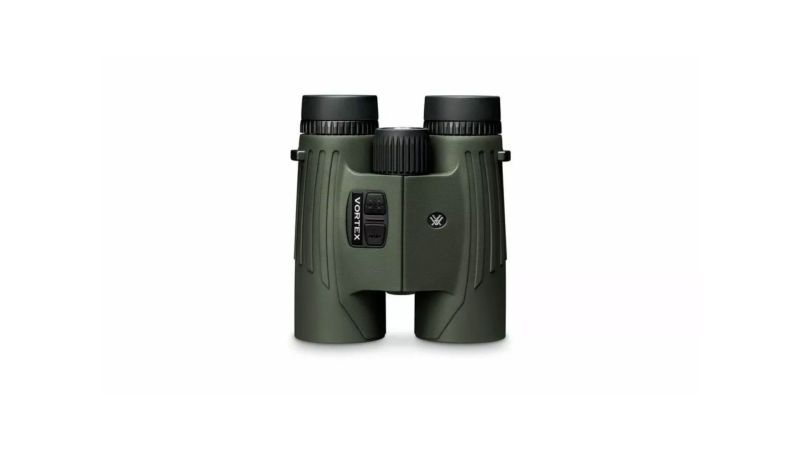We may earn revenue from the products available on this page and participate in affiliate programs.
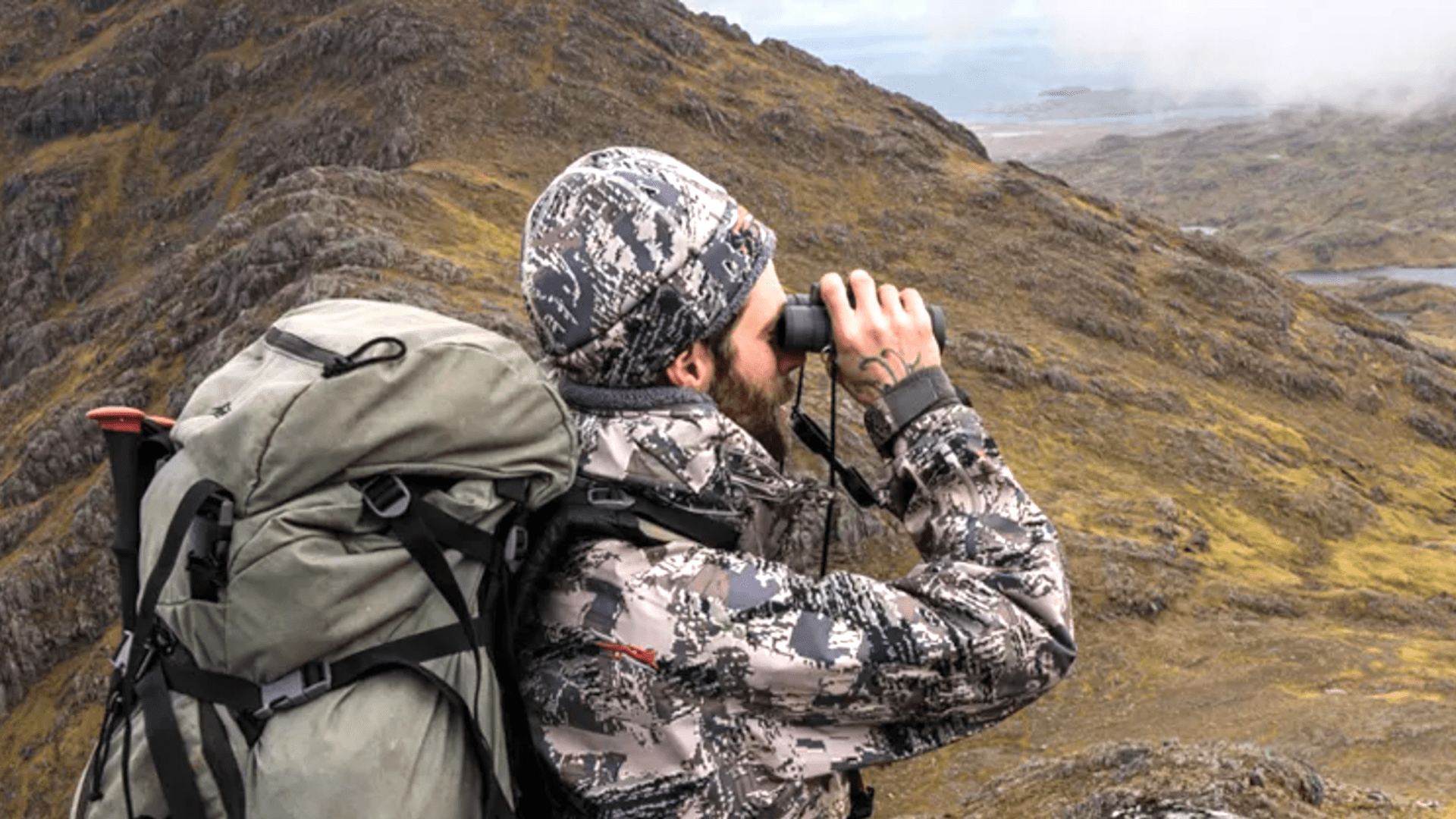
When U.S. service members, hunters, birders, and recreational shooters need a quality magnified optic without racking up a bunch of credit card debt, they often turn to Vortex binoculars. A common comparison is to put the manufacturer up against the competition from premium brands like Leupold, Swarovski, and Zeiss. Another is to cross-shop with more budget-friendly binoculars from Nikon, Bushnell, and Celestron. We’ve been won over by Vortex in high-end and entry-level gear guides alike, and you can find the brand in our reviews of the best binoculars for hunting and the best compact binoculars.
It turns out that Vortex does a pretty good job of bridging the gap between those two categories. By splitting the difference, Vortex provides something for new hobbyists, more serious users, and even professionals who rely on quality binoculars to make a living. Regardless of the model, Vortex binocular reviews tend to be very consistent; owners are confident that they got more than they paid for. They also appreciate Vortex’s flat-out unbeatable warranty.
So, which Vortex binoculars are the best? Let’s find out.
- Best Overall: Vortex Razor UHD 12×50
- Best Budget: Vortex Crossfire HD 8×42
- Best Value: Vortex Diamondback HD 10×50
- Best for Long-Range: Vortex Kaibab HD 18×56
- Best for Hunting: Vortex Fury HD 5000 10×42
Best Overall
Vortex Razor UHD 12×50
Best Budget
Vortex Crossfire HD 8×42
Best Value
Vortex Diamondback HD 10×50
Best for Long-Range
Vortex Kaibab HD 18×56
Best for Hunting
Vortex Fury HD 5000 10×42
Things to consider before buying Vortex binoculars
Vortex binoculars are offered in eight different product families ranging from entry-level to premium, and bristling with the latest and greatest technology. By understanding the options available and how they compare to each other, you’ll get a better idea of which Vortex binoculars are right for you.
Fury
Vortex Fury binoculars will take your game to another level with a built-in laser rangefinder that’s accurate to within three feet at 5,000 yards. Multiple ranging modes allow you to scan, calculate line-of-sight distance, or factor in elevation to get the information you need to make a clean shot. As always, these premium 10×42 optics get the best glass, tubes, and internal components Vortex has to offer.
Razor
Razor binoculars are as good as it gets for Vortex. While HD options are available, UHD binoculars are the pinnacle of clarity, brightness, and durability. These binoculars are built for professionals who require the best and are willing to pay for them. Sizes for Razor HD binoculars include 8×42, 10×42, 10×50, and 12×50. Sizes for Razor UHD binoculars include 8×42, 10×42, 10×50, 12×50, and 18×56.
Kaibab
Is long-range shooting your thing? Then the Kaibab is what you need; plain and simple. The only size is 18×56 and it is excellent. Plan on adding a mount and tripod to get the most out of this workhorse.
Viper
Vortex Viper binoculars are all about making premium optics available to the working class. With high-end internals and big, bright objective lenses, these are outstanding binoculars to take into the field, whether you’re in the military or on a tree stand. Prices start at more than $600, so Viper binoculars are built for regular users who demand a lot from their gear, but don’t rely on binoculars as a primary tool. Sizes include 8×42, 10×42, 10×50, and 12×50.
Diamondback
When it comes to value, Diamondback binoculars are tough to beat. Vortex filled out the product family with magnification power ranging from eight to 15 and objective lenses from 28 to 56 millimeters in diameter. All get quality glass and Vortex’s HD internals. Don’t confuse value with budget; these binoculars are head and shoulders above budget-focused binoculars but still offer a great bang for the buck. Regardless of what you’re in the market for, there’s probably a Diamondback for you. Sizes include 8×28, 10×28, 8×32, 10×32, 8×42, 10×42, 10×50, 12×50, and 15×56.
Crossfire
Vortex’s Crossfire family of binoculars makes a strong case to be the best option for budget-minded shoppers. Slim roof prisms, high-definition optics, and an included GlassPak case combine to make Crossfire binoculars a compelling deal, even at full price. Objective lens options are larger than we typically expect at this price range, making Crossfire binoculars well-suited to low-light situations. Sizes include 8×42, 10×42, 10×50, and 12×50.
Raptor
Raptor binoculars don’t look like anything else in the Vortex lineup, and that’s due to the traditional Porro prisms inside. These affordable binoculars perform well in low light and offer a crisp image that should cost more than it does. Pricing is comparable to the smaller Vanquish binoculars, but these midsize binoculars are much better suited to environments where power and low-light performance take priority over portability. Sizes include 8.5×32 and 10×32.
Vanquish
Need something small and light? Vortex Vanquish binoculars offer an accessible entry point into the world of Vortex binoculars. They’re also very compact, thanks in part to a reverse Porro prism design. With an MSRP of $130 or less, these are some of Vortex’s most affordable binoculars. Sizes include 8×26 and 10×26.
Accessories
In addition to quality optics, Vortex offers accessories to help you get the most out of them. Binocular accessories include chest packs, replacement lens caps, and everything you need to keep your binoculars clean and working at their best.
FAQs about Vortex binoculars
Q: Are Vortex binoculars worth it?
A: Vortex makes solid binoculars and many of them present great value for the money.
Q: Are Leupold binoculars better than Vortex binoculars?
A: Vortex and Leupold both make optics spanning a wide price range that includes entry-level and premium binoculars.
Q: Do Vortex binoculars zoom?
A: No, all Vortex binoculars use fixed magnification between eight- and 18-power.
Q: Does the military use Vortex scopes?
A: Yes, the U.S. Army selected Vortex to supply prototype optics capable of equipping its new Next Generation Squad Weapon variants.
Final thoughts
If you have room in your budget, it’s hard to think of a reason not to buy the Vortex Razor UHD 10×50. The binoculars’ premium components, rugged construction, and unbeatable customer support make them an easy choice.
Methodology
As with any brand-specific gear guide, I started by going straight to the source. Vortex’s website does a great job of laying out the various product families within the riflescope, red dot, binocular, rangefinder, spotting scope, tripod, and monocular segments. The manufacturer also has a healthy catalog of in-house content, including well-produced videos. I also completed five binocular-specific Vortex training modules available to industry professionals to gain a better understanding of the company’s products.
Finally, I took all that knowledge, combined it with feedback from customers, and used it to pick a handful of products that are best suited to life in the military. Whether you have a lot of money to spend or just a few extra bucks, there’s something here you can afford. The Vortex binoculars on this list have you covered for deployment, field exercises, or weekend adventures on your own.
